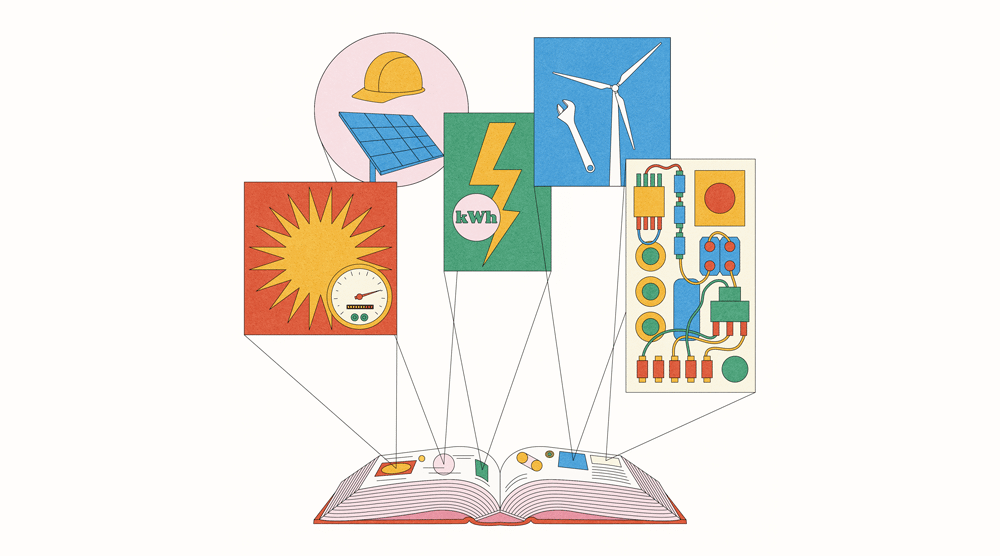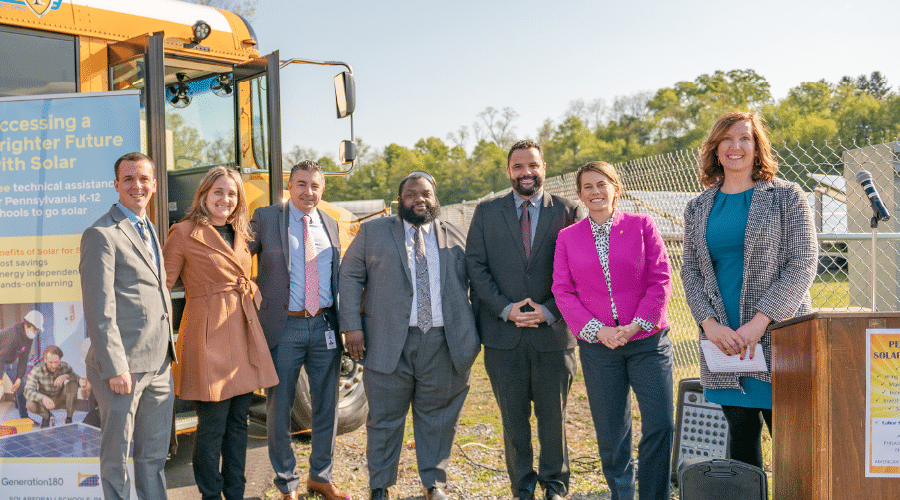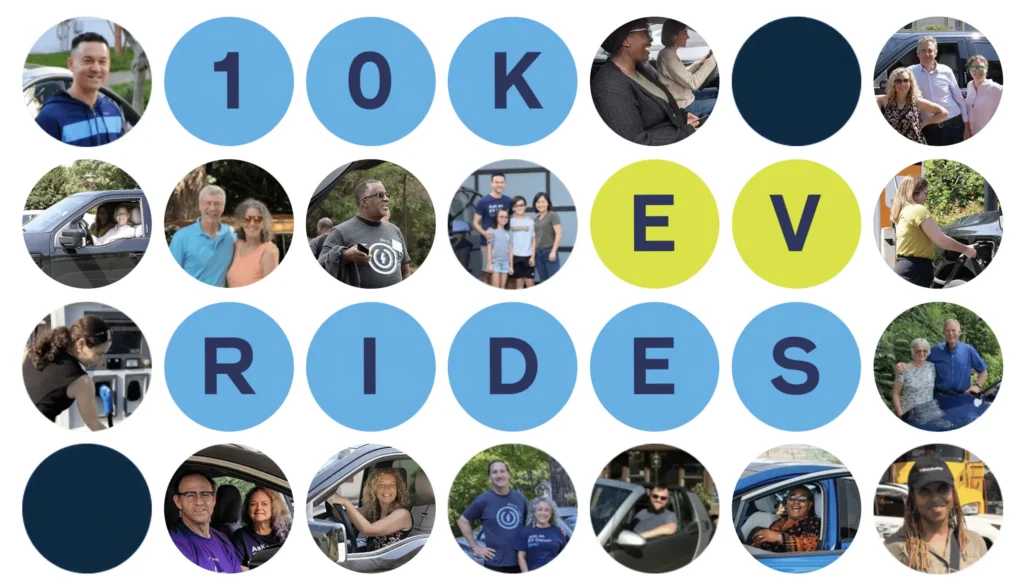Picture this. At a school parking lot in Austin, Texas, high school students gather in front of an electric car with its hood popped open. When they look inside, “kids see what’s not in there,” Amy Atchley said. “There’s hardly anything in there but a battery. And that’s super exciting.”
This is a scene that Atchley has seen countless times since 2018 and it never gets old. “Seeing them light up is everything,” she said.
As Austin Energy’s senior lead of its electric vehicle energy program, Atchley created a pilot program called EVs for Schools through a public-private partnership with Austin Independent School District.
Charging stations at some schools are known as “Living Labs,” because students collect data from the charging stations and measure usage. They learn about the role electric vehicles play in clean energy and sustainable transportation.
-
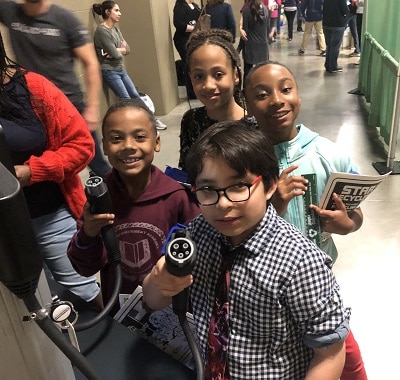
Students interacting with EV chargers
The program started out in 2018 as a pilot at four Title I schools: three high schools and one middle school. Title I schools have high numbers or high percentages of children from low-income families. They receive federal grants to help ensure that all children, regardless of household incomes, meet state academic standards.
“We wanted to start with schools that would not typically have these resources,” Atchley said.
The utility company also wanted to start the program with schools that had at least some employees who drive EVs.
“We wanted that championship in the school community,” Atchley said. “We thought that might be a challenge. But we found that a lot of our teachers were driving used EVs, and were totally excited to have workplace charging.”
One of those champions is Ed Hill, a faculty member in the technology department at AISD who owns a plug-in hybrid. He takes advantage of charging stations at schools because he travels throughout the school district for work.
EV and plug-in hybrid drivers can pay about $4 a month for any charging station in the Austin Energy charging network, including charging stations in the school district.
“We have businesses and companies making sustainable changes,” Hill said. “Even without being mandated.”
Not every school that teaches the curriculum has charging stations. But the school district renovated many of its school parking lots to be ready for charging stations to be installed in the future. Newly built schools are also EV-ready. A 2017 voter-approved education bond to create 21st-century learning spaces in the school district made this parking lot remodel project possible.
Reaching the next generation where they are
EV for Schools expanded to serve 122 schools in Central Texas with curriculum offered in both English and Spanish.
“I knew that if we could reach young people, we would be able to reach their parents,” Atchley said. “And we also know that… young people really understand that climate impact is going to be one of the greatest challenges of their generation. And they are on board with this [technology]. They really want to be a part of the solution.”
The curriculum, with 10 lesson plans, is designed to meet the Texas Essential Knowledge and Skills standards, while influencing generations of future drivers to make sustainable choices.
-
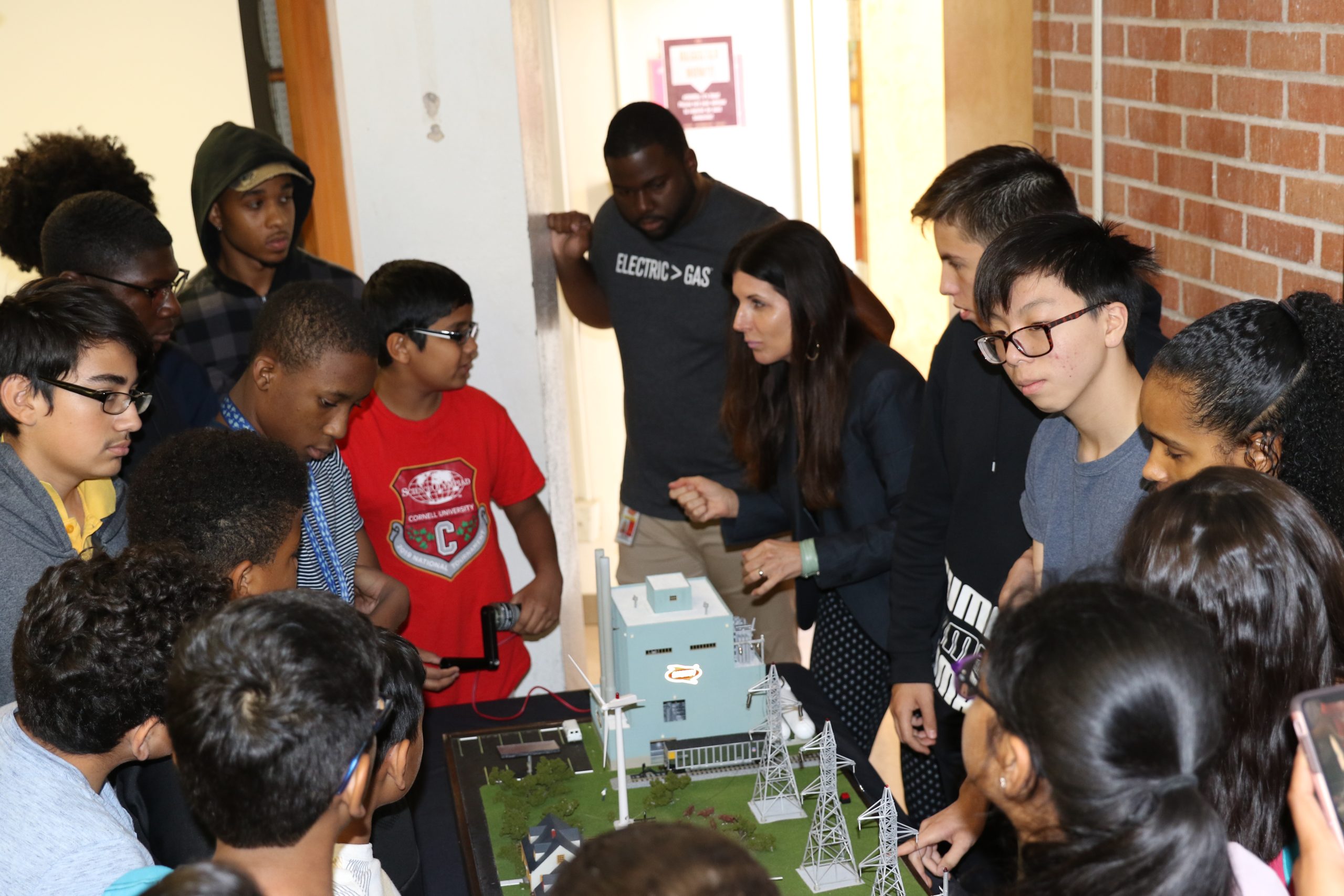
Amy Atchley (center) and students in front of a model of a wind farm
One way kids learn about EVs is through virtual reality. “They put on the goggles and they go into this virtual world,” Atchley said.
That virtual world is actually right in their backyard. Downtown Austin has a mobility hub called “Electric Drive,” which features bike-share and EV fast charging options. The hub is outfitted with fast chargers for EVs and solar kiosks where people charge their e-bikes, cell phones, and computers.
Students get to drive through Electric Drive in a Tesla through this virtual reality activity. They also get to visit a virtual wind farm where they learn that Austin’s network of charging stations is fully powered by Texas wind.
“They embrace it and they love it,” Atchley said. “So this is reaching kids where they are and where they’re going. It also makes them realize this is happening now. It’s something that they have access to and kind of helps to normalize this shift of behavior and new mobility.”
Equity
It’s no surprise that EVs for Schools started out with a strong focus on equity, because its parent program, EVs are for EVeryone, is also equity-focused. Austin Energy created EVs for EVeryone and E-Bikes are for Everyone to make electric vehicles and e-bike sharing programs affordable and accessible to people who earn low to moderate incomes.
“Transportation is the number two household expense in Austin [for families in extreme poverty],” Atchley said. “That’s heavy. It’s right behind housing. So housing and transportation are intrinsically connected.”
Often programs that promote electric vehicles, solar panels or energy efficiency are unaffordable to people with low to moderate incomes. And yet they spend the most money on energy – both to fuel their cars, and heat and cool their homes. People of color also breathe more particulate air pollution on average.
To address these inequities, The City of Austin launched a climate equity plan with ambitious goals: net zero emissions in Austin by 2040. “And in terms of transportation, that means by 2030, we need to have 40% of those miles traveled on the road [to be] electric,” Atchley said.
Austin Energy’s programs raise awareness and improve access to electric transportation by offering everything from test drives on both EVs and e-bikes, to training programs on how to use them, to subsidies to make ride-sharing programs affordable. And the utility company in collaboration with partners is bringing some of these ebike- and ride-sharing programs to affordable housing.
“When communities see electric bikes or electric vehicles coming to their neighborhoods, the first thing that signals [to them] is gentrification,” Atchley said. “So we’re trying to break that barrier down. We want residents to realize: this is for you.”
EVs for Schools also sends that message to kids and teenagers by leveraging education to raise awareness about clean and renewable energy technology. It’s a powerful way to inspire young people to consider careers in clean energy.
“We know we weren’t reaching any students [before EVs for Schools],” Atchley said. “We know that [these days] we’re reaching nearly 7,000 students with the educational Living Labs in the Austin area. And nearly 800 teachers have gone through the training so that they can teach the curriculum to their students.”
Austin Energy is working with other cities, utility companies and even some school districts to help them create their own EVs for Schools programs. A clean energy future looks bright in Texas as EVs for Schools continues to grow not only its program, but its influence around the state.












